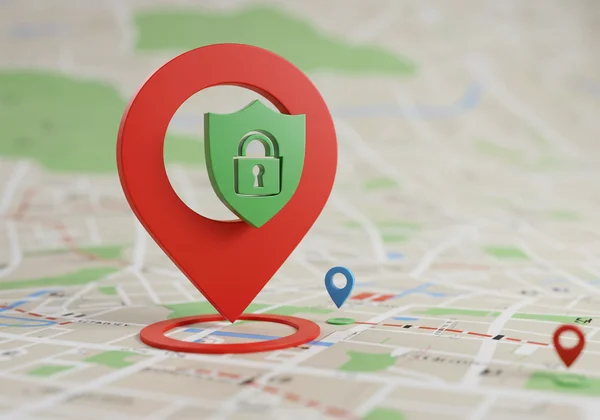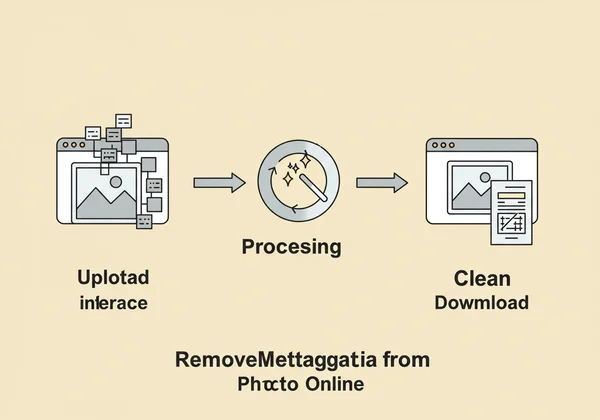照片元数据能揭示什么?立即保护您的隐私
您分享的那些看似平常的咖啡、新宠物或家庭度假照片,可能正在向陌生人透露比您预期更多的个人信息。每张数字图像中都隐藏着大量的元数据——一种不可见的数据,可以 精确定位 您的位置、识别您的相机型号,甚至揭示您的个人习惯。那么, 元数据究竟能揭示什么? 它是一个您可能甚至不知道自己正在留下的数字足迹。在本指南中,我们将确切揭示您的照片正在广播什么,并向您展示如何在在线分享另一张图片之前轻松 保护您的隐私。
揭示您的数字足迹:元数据能揭示什么
每次您使用数码相机或智能手机拍照时,设备都会自动将信息直接嵌入图像文件。这种隐藏数据,被称为元数据,对整理照片很有用,但在在线分享时会成为一个重要的隐私隐患。把它想象成附在您照片上的一个秘密标签,揭示的细节远非照片本身所能呈现。了解这一点是管理您的数字身份的第一步。

位置,位置,位置:您的地理标记风险
您的照片中隐藏的最敏感信息之一是照片拍摄地点的精确 GPS 坐标。这被称为地理标记。虽然这对于标记您旅行照片的拍摄地点很有用,但这些 地理标记风险 是深远的。分享一张在家中拍摄的照片可能会向全世界广播您的家庭住址。发布一张您孩子在他们最喜欢的公园里的照片会暴露他们常去的地方。对于有隐私意识的个人来说,这是一个亟待解决的重大隐患,需要在任何照片上传到社交媒体之前加以解决。

超越 GPS:EXIF 数据中的个人详细信息
最常见的照片元数据类型称为 EXIF(可交换图像文件格式)数据。除了位置, EXIF 数据 包含丰富的技术细节。这包括照片拍摄的精确日期和时间,精确到秒。它还会记录您的相机或智能手机的具体品牌和型号(例如,Apple iPhone 14 Pro、Canon EOS R5),以及光圈、快门速度和 ISO 等相机设置。虽然看似无害,但这些信息可以揭示您设备的价值或您的日常作息规律。您可以使用简单的在线工具轻松 擦除 EXIF 数据。
设备与习惯:来自您相机数据的线索
通过多张共享照片累积的 相机数据 可以勾勒出您生活的详细图景。例如,如果您在上午 9 点到下午 5 点之间始终从同一大致区域发布照片,有人就可以推断出您的工作地点。具体的设备型号可以表明您的财务状况或技术偏好。这种由元数据留下的数字面包屑,可以被从商业营销者到不法分子的任何人拼凑起来,在未经您同意的情况下建立您的个人档案。
照片元数据隐私风险的隐藏危险
既然您了解了元数据能揭示什么,那么认识到现实世界的后果至关重要。 照片元数据隐私风险 不仅仅是一个理论概念;它对您的个人安全、家庭安全甚至职业生涯都有真切的风险。忽视这个隐藏的数据层就像在数字世界中不锁前门一样。这是对不请自来、往往不受欢迎的关注的公开邀请。
谁在窥视?了解元数据跟踪
落入不法分子手中,照片中嵌入的位置和时间数据可能会成为骚扰和犯罪的工具。这是元数据的阴暗面,通常被称为 元数据式跟踪。跟踪者可以利用您社交媒体帖子中的地理标记来跟踪您的行踪、了解您的日程安排,并 锁定 您的家庭、工作或学校地址。这是一种严重的威胁,将无辜的照片分享变成了潜在的安全隐患,因此必须从您在线发布的每张图片中 删除图片元数据。

保护您的亲人:儿童安全与共享照片
对于父母来说,元数据问题与 儿童安全 息息相关。一张您孩子在后院玩耍的可爱照片可能会无意中暴露您家的位置。一张学校活动的照片可能会揭示他们每天在哪里度过。在一个保护儿童在线安全至关重要的时代,删除元数据是必不可少的步骤。通过清除这些数据,您可以与朋友和家人分享珍贵的时刻,而不会广播有关您孩子生活的敏感信息。
职业风险:客户与版权问题
风险延伸到职业领域,影响摄影师、设计师和企业。对于专业摄影师来说,EXIF 数据可能会揭示您不愿与竞争对手分享的专有相机设置。更严重的是,如果您分享一张在客户私人住宅或办公室拍摄的照片,您可能会无意中泄露机密位置数据,从而承担法律和道德上的责任。对于企业来说,确保所有发布的图像都清除元数据是数据合规和保护 版权保护 的关键部分。快速的 照片元数据删除 过程应成为标准做法。
掌控一切:如何擦除敏感图像元数据
好消息是?这些隐藏信息完全在您的掌控之中。您不需要成为技术专家或购买昂贵的软件来保护自己。您可以在几秒钟内轻松 擦除敏感图像元数据,确保您的照片只分享您想讲述的故事。这个简单的操作使您能够按照自己的方式,自信而安全地与数字世界互动。
在线免费删除元数据的简单步骤
保护您隐私的最简单方法是在您将图片上传到任何地方之前使用专用的在线工具。方法非常简单:您访问一个网站,上传您的照片,工具会立即剥离所有隐藏数据。然后您可以下载干净、无元数据的图像。最棒的是,您可以免费 在线删除元数据,无需安装任何软件或注册。这是一个简单两步的习惯,对您的在线安全大有裨益。

为什么我们的工具是您值得信赖的解决方案
当涉及到您的个人照片时,信任就是一切。这就是为什么我们的平台是您 值得信赖的解决方案。我们的平台建立在三个核心原则上:
- 极致安全: 我们将您的隐私放在首位。您的图像绝不会存储在我们的服务器上。整个元数据删除过程是即时发生的,您的照片在处理后立即删除。
- 轻松简单: 您不需要任何技术技能。只需拖放您的图像,我们的工具就会完成其余的工作。几秒钟内,您就会得到一张干净的照片,可以下载和分享。
- 完全免费且普及: 没有费用、没有注册、没有障碍。我们的使命是让每个人都能轻松获得在线隐私保护。
准备好掌控一切了吗? 尝试我们的免费工具,体验保护您的数字足迹是多么容易。
掌控一切:分享您的照片,而非您的数据
您的照片旨在分享瞬间,而非您的私人数据。元数据能揭示的内容往往令人震惊,从您的家庭住址到您的日常作息。但有了这些知识,您就拥有了力量——控制您信息的权力。通过将简单的元数据删除步骤纳入您的日常习惯,您可以自信地继续分享您生活中的精彩瞬间,同时确保您的隐私得到保障。
不要将您的数字安全寄托于偶然。在您发布下一张精彩图片之前,花点时间使用我们快速、免费且安全的工具 确保您的照片安全。

关于照片元数据与隐私的常见问题
照片中的元数据究竟是什么?
元数据是“关于数据的数据”。在照片中,它是一组嵌入图像文件中的基于文本的信息,用于描述图片属性的。这包括拍摄日期和时间、使用的相机型号、相机设置(如光圈和快门速度),以及通常是照片拍摄的 GPS 坐标。
为什么从我的图片中删除元数据很重要?
删除元数据对于保护您的个人隐私和安全至关重要。这些数据可以揭示敏感信息,例如您的家庭住址、工作地点、日常作息以及您孩子常去的地点。删除它可以防止跟踪者、窃贼或任何其他可能滥用这些隐藏信息的人。
使用在线元数据移除工具对我的照片安全吗?
是的,前提是您使用值得信赖的服务。像我们平台这样的安全 在线元数据清理工具 在设计时将安全性作为首要任务。我们处理您的图像并删除数据,而绝不会将您的文件存储在我们的服务器上。这确保您的照片在整个过程中保持私密和安全。
我如何知道我的照片正在揭示哪些信息?
在大多数电脑上,您可以右键单击图像文件,选择“属性”(在 Windows 上)或“获取信息”(在 Mac 上),然后在“详细信息”选项卡下查看一些 EXIF 数据。然而,最简单、最安全的方法是假设所有照片都包含元数据,并在分享前使用 元数据清理工具 将其删除,确保没有任何敏感信息意外泄露。